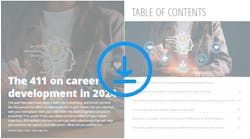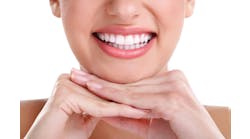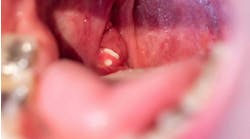The year that Little Richard’s “Tutti Frutti” screamed up the charts to No. 1, Oral Health America was founded as the American Fund for Dental Health by members of the American Dental Association, American Dental Education Association, the American Dental Trade Association, and the Wm. Wrigley Jr. Company. In that year of 1955, the organization’s goal was to raise funds for the improvement of dental education.
More than 50 years later, the non-profit organization, now named Oral Health America, continues to serve as a leader through innovative programs and communications efforts. Oral Health America’s mission is to increase public awareness of oral health’s importance to total health.
During the past 15 years, Oral Health America founded “Smiles Across America,” the first nationwide campaign to build infrastructure for school-based oral health care programs, and established the “Campaign for Oral Health Parity,” reaching more than 50 percent of American households with messages about oral health’s importance to total health. The organization also pioneered the National Spit Tobacco Education Program, effectively collaborating with Major, Minor, and Little League Baseball to break the tie between spit tobacco use and “America’s pastime.” Most recently, Oral Health America launched the National Periodontal Disease Coalition, a group of more than 100 business and professional leaders dedicated to improving the recognition of and treatment practices for a disease that affects most adults.
Oral Health America depends upon donations, particularly support from the dental industry, to make the programs successful. Dental industry partners also contribute products, equipment, technical assistance, and communications support to Oral Health America program sites throughout the country.
Many in the dental industry know Oral Health America through its Annual Gala & Benefit. For 16 years, the organization has ushered in the Chicago Midwinter Dental Meeting with this stellar event, which serves not only as a key fundraiser for the organization, but as the premier networking event of the year.
This year’s Oral Health Gala will be held Thursday, Feb. 22 at Chicago’s Navy Pier. The theme of the black tie optional event will be “Connect in Chicago.” Attendees will enjoy a delightful evening of dining and dancing, meeting old friends, and making new contacts. The legendary silent auction will again feature spectacular jewelry, sports and Hollywood memorabilia, trips, wine, and other exceptional items.
The Gala raises funds not only through ticket sales, but through sponsorships, which help defray the costs for the event. Sponsorships are an excellent way to gain visibility for a company while making a tax-deductible contribution to a worthy cause. Companies can purchase sponsorships at various levels and can also obtain tickets by the table, which provides a wonderful opportunity for entertaining key customers or colleagues.
For tickets or sponsorship information for Oral Health America’s Annual Gala & Benefit on Thursday, Feb. 22, 2007, contact Joseph Donohue at (312) 836-9900, or [email protected].
You are the dental practice’s “hidden” resource
by Roger P. Levin, DDS
When dentists think about continuing education, they usually imagine a one-day seminar with a speaker presenting information using a PowerPoint™ show. The speaker may share information that both impresses and educates. It is often valuable information that helps dentists enhance their clinical and managerial skills, as well as provide better care to their patients.
There is another source of continuing education that may not occur to dentists - you. Because they do not pay a fee for your services, it’s easy for dentists to overlook the value of sales representatives.
Dentists need to know that you can help their practices achieve greater success. Here’s how to position yourself as an educational asset for dentists and specialists:
1. Think about what you can do for their practices. Many dentists are not aware that you are very knowledgeable. You can impart that knowledge through, for example, lunch-and-learn sessions in which the entire dental team can gain more knowledge regarding a particular product or technology.
Your industry experience matters. Through your interaction with many practices, you are in an excellent position to learn about successes and failures in the dental field. You can discuss this information with dentists and recommend the best ways to achieve growth by choosing and incorporating the right products into their practices.
2. Share information about advances in dentistry. You are continuously updated on new products, services, and technologies that are introduced into the industry. When something new is introduced, it is ideal when dentists seek your thoughts on it. You can give them your opinions about the new service, product, or technology, even if it is not part of your product line.
You can help dentists and specialists determine if the service, product, or technology would benefit their practices. That’s why it’s a good idea to be prepared when dentists ask for an explanation of a new service, product, or technology. They may also elicit your opinion about the best ways to gain maximum results. They will be keenly aware that every service, product, or technology has advantages and disadvantages. Be ready for the hard questions.
3. Stay well ahead of the curve in your product knowledge. You can provide dentists with valuable, proprietary information that cannot be found in brochures or on Web sites. Share information about what products have improved the quality of results in other practices.
4. Understand that dentists often use “The 10 percent theory” when adopting new services, products, or technologies. The 10 percent theory states that when doctors make radical shifts in patient treatment, they should shift 10 percent per month. Instead of using a new material for every case from the moment they hear about it, dentists should use it with 10 percent of their cases. They can increase its use by another 10 percent per month as they go through the learning curve and gain experience. This gives doctors the chance to learn how to best use the technique or technology firsthand.
Conclusion
Developing a good relationship with dental practitioners hinges on understanding not only your product but also dental practices. While product knowledge is good, it is equally important that dentists sense that this knowledge benefits them. The education you can provide your audience is key to success. By educating dentists about new products, services and technologies that have increased productivity and profitability in other practices, you position yourself as an invaluable educational resource. When that happens, your job becomes a whole lot easier.
Roger P. Levin, DDS, is founder and CEO of Levin Group, a leading dental practice management consulting firm that is dedicated to improving the lives of dentists through a diverse portfolio of lifetime services and solutions. Since the company’s inception in 1985, Dr. Levin has worked to bring the business world to dentistry. A popular lecturer, Dr. Levin addresses thousands of dentists and staff worldwide each year in 100-plus seminars and at the dental industry’s most prestigious meetings.




